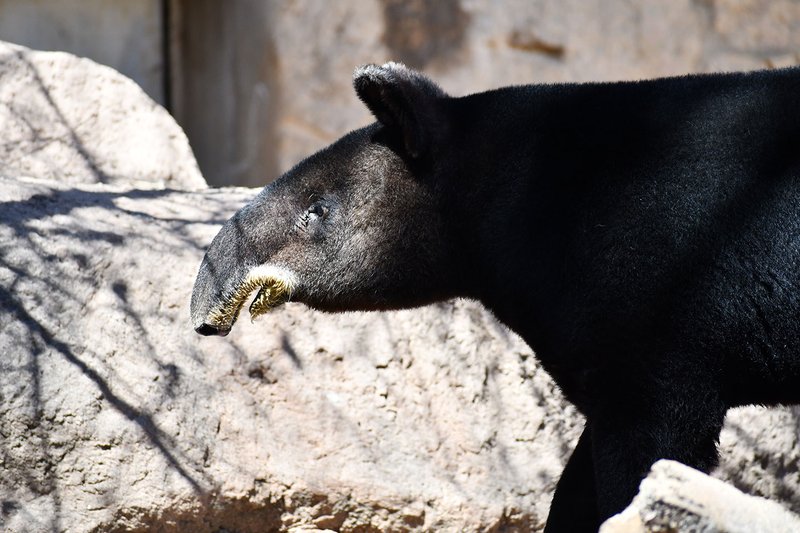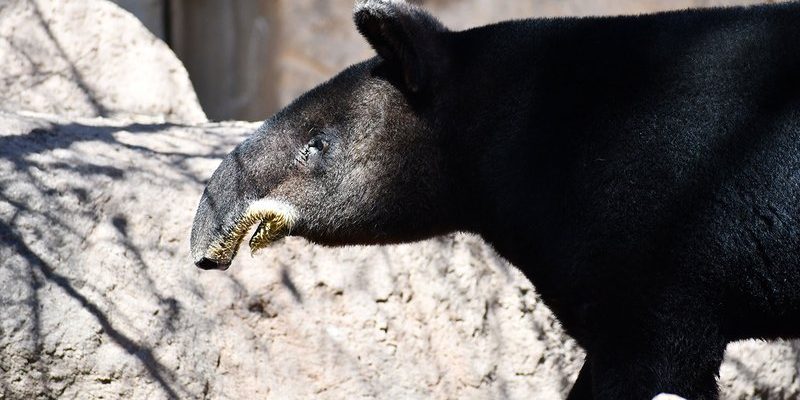
The truth is, they’re facing some major challenges that put their very survival at risk. With threats like habitat loss and hunting, these tapirs are struggling to find their place in an ever-changing world. Let’s dive deeper into what’s happening with the mountain tapir and why it really matters for global conservation efforts.
Understanding the Mountain Tapir
Mountain tapirs, or *Tapirus pinchaque*, are the smallest of all tapirs, weighing in at around 500 pounds. They usually roam in the cool, damp forests between 8,000 to 14,000 feet above sea level. Imagine navigating a steep, rocky terrain with thick fog surrounding you—this is home for the mountain tapir.
These tapirs have a thick, woolly coat that helps them stay warm in their chilly habitat. Their diet mostly consists of leaves, fruits, and branches, which they munch on while wandering through the forests. They’re generally solitary animals, preferring to roam alone or with just a few others. Here’s a fun fact: mountain tapirs can also help spread seeds through their dung, playing a vital role in their ecosystem!
Why Are Mountain Tapirs Endangered?
Honestly, the reasons behind the endangered status of the mountain tapir boil down to a few major factors. The most pressing issue is habitat loss. As humans expand into their territory, logging, farming, and urban development not only destroy tapir habitats but also fragment the forests into isolated patches. This makes it incredibly difficult for them to find mates or food.
Next up is poaching. Despite being protected by law, mountain tapirs are often hunted for their meat and skin, driven by both poverty and the illegal wildlife trade. This direct threat, combined with habitat encroachment, has led to significant drops in their population numbers. In fact, there are estimated to be fewer than 2,500 individuals left in the wild. That’s a startlingly low number for such a vital species.
Conservation Efforts and Challenges
So, what’s being done to save the mountain tapir? Several organizations are working hard to implement conservation strategies. Protected areas have been established in countries like Colombia, Ecuador, and Peru to safeguard their remaining habitats. These reserves aim to provide safe havens where tapirs can thrive without the threat of poaching or habitat destruction.
Additionally, conservation groups engage in community education to spread awareness about the importance of protecting mountain tapirs. By involving local communities in conservation efforts, they help create a sense of ownership and responsibility toward preserving these unique animals. But here’s the thing: funding and resources often fall short, making it a constant uphill battle.
The Role of Local Communities
You might be wondering how local communities can impact mountain tapir conservation. Involving people who live near these habitats can lead to significant improvements in conservation outcomes. For instance, when communities understand how tapirs contribute to their ecosystem—by dispersing seeds and supporting forest health—they become more invested in their protection.
Programs that offer alternative livelihoods to those who rely on poaching or deforestation can significantly alter the landscape of conservation. By providing job opportunities in ecotourism or sustainable agriculture, people can earn a living while preserving the habitats that mountain tapirs depend on. It’s a win-win situation!
Global Implications of Mountain Tapir Conservation
The fight to protect mountain tapirs isn’t just about saving one species; it’s about preserving the entire ecosystem. The loss of a keystone species like the mountain tapir can lead to a domino effect that harms other plants and animals in the area. By investing in their conservation, we’re also safeguarding countless other species that share their habitat.
Furthermore, mountain tapirs are indicators of environmental health. If they’re struggling, it often signals broader issues that could affect other wildlife and even human populations nearby. So, protecting them benefits everyone, not just those who care about cute animals.
How You Can Help
You might feel a bit powerless when facing such a big issue, but there are ways you can contribute to mountain tapir conservation. Here are a few simple steps:
- Support organizations that focus on wildlife conservation and habitat preservation.
- Consider eco-friendly travel options that promote conservation efforts and local economies.
- Raise awareness in your community about the plight of mountain tapirs; sharing information can spread the word.
- Advocate for policies that protect wildlife and their habitats.
Every little bit helps. Whether it’s donating to a conservation group or simply educating yourself and others about the mountain tapir, your efforts can have a ripple effect.
In summary, the mountain tapir is indeed endangered, facing numerous threats that make their survival increasingly fragile. By understanding their plight and the importance of their role in the ecosystem, we can take meaningful action to support their conservation. Remember, protecting mountain tapirs isn’t just about saving one species; it’s about nurturing entire ecosystems and the delicate balance of nature. So, the next time you think of these charming creatures, consider how you can play a part in their story—and ultimately, the story of our planet.

